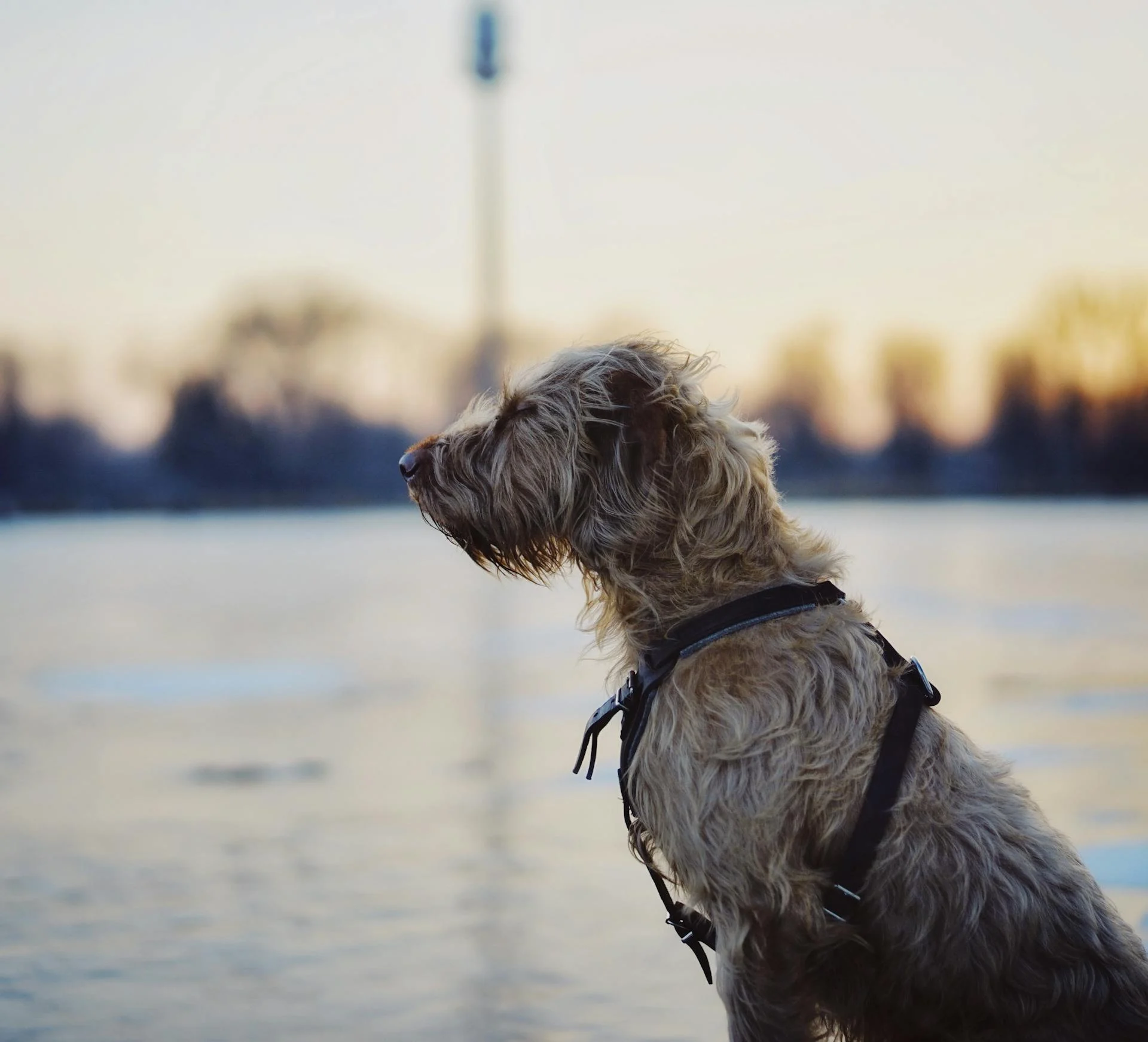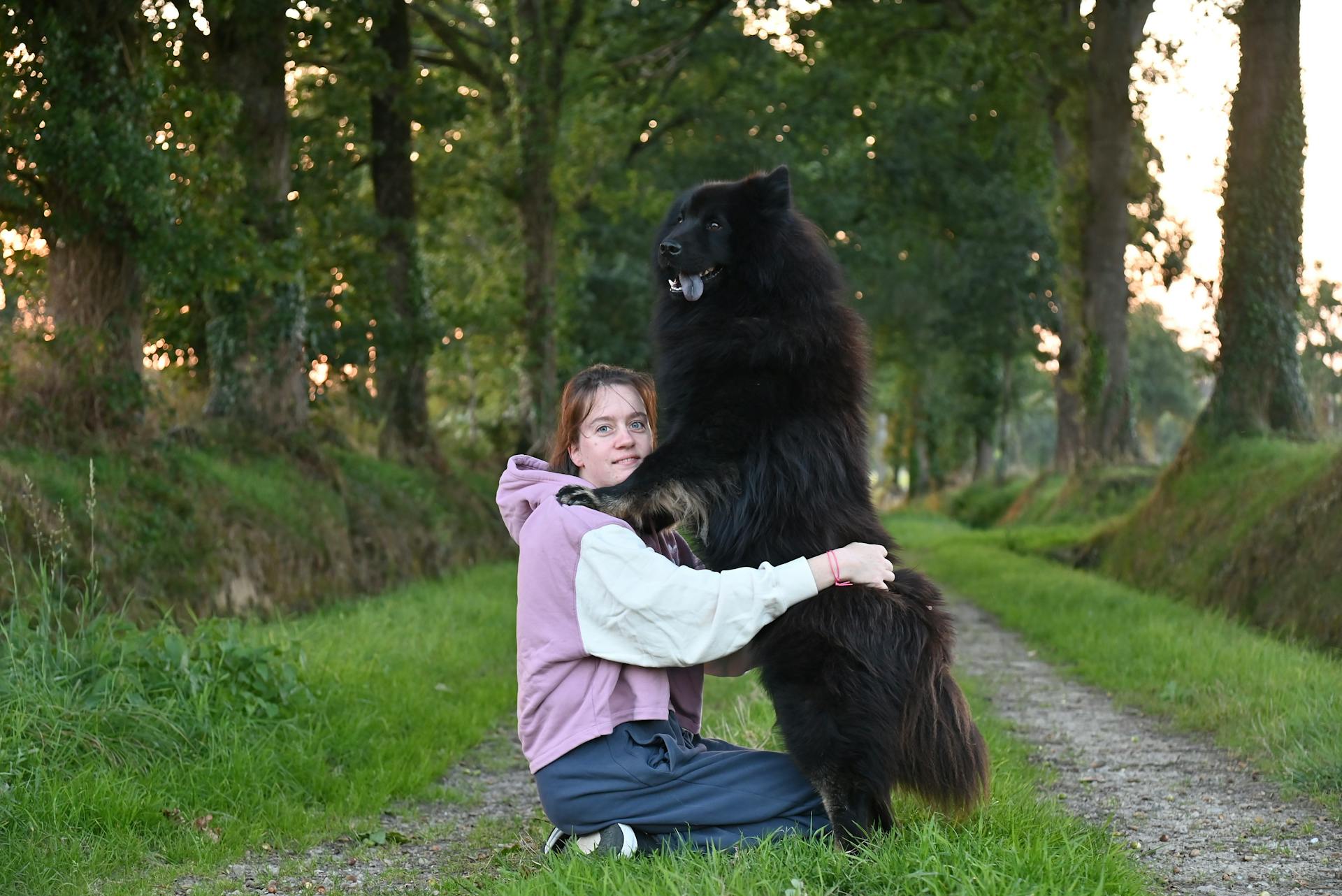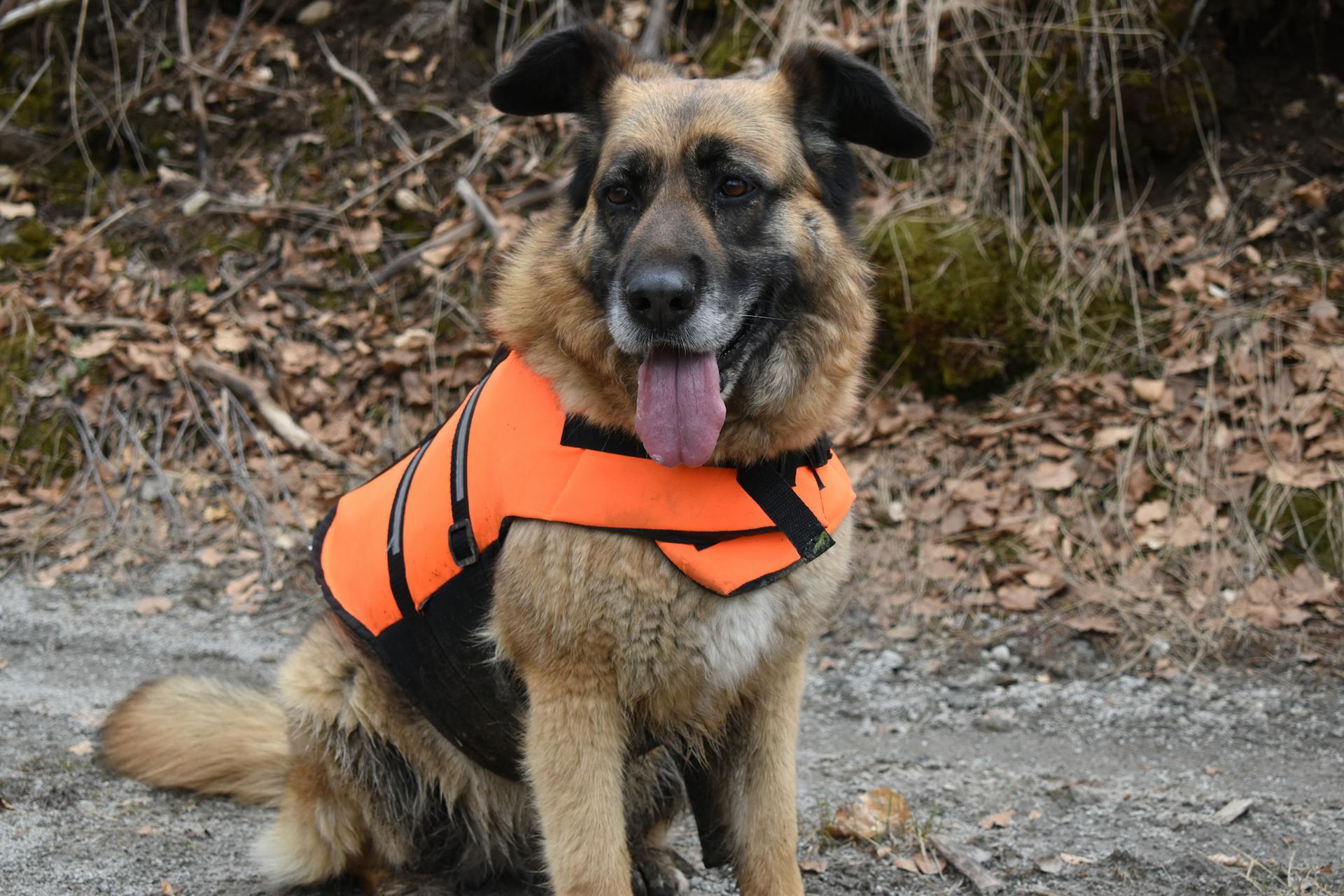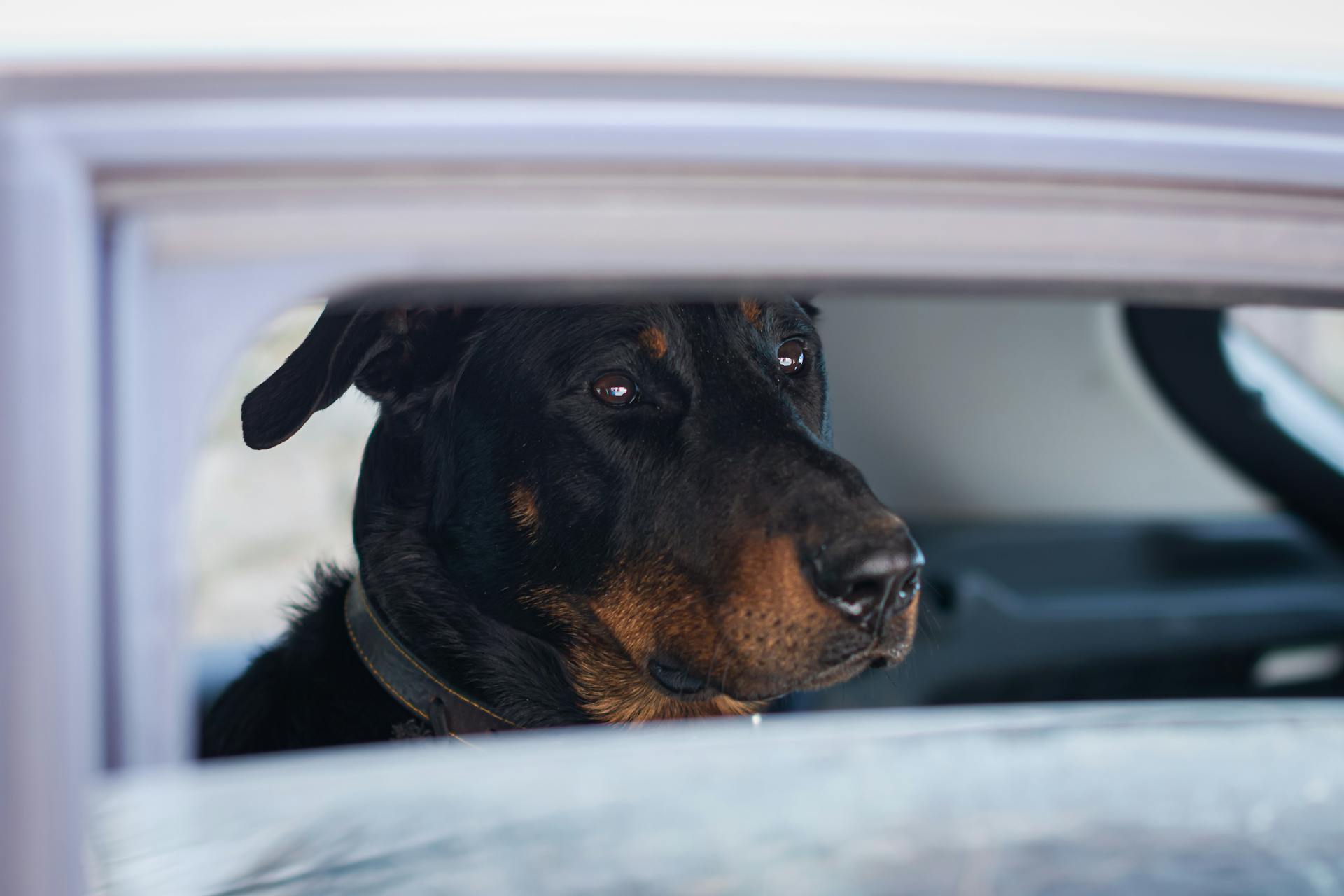
The Irish Wolfhound has a rich history that spans over 2,000 years, dating back to ancient times. They were bred to hunt large game such as wolves and deer.
These massive dogs were highly valued by the Celts, who used them for hunting and guarding. They were also used for ceremonial purposes, such as guarding the gates of the city.
The Irish Wolfhound was a favorite of the Irish aristocracy, who bred them for their size, strength, and hunting ability. They were known for their gentle nature and loyalty to their families.
In the 15th century, the Irish Wolfhound was almost extinct due to overhunting and the introduction of smaller breeds.
Ancient Origins
The Irish people prized these hounds for their size, strength, and hunting prowess. They were used to hunt deer, elk, boar, and wolves.
According to legend, one of the High Kings of Ireland, Cormac mac Airt, had an army of 300 hounds. Irish Wolfhounds were highly coveted because they were excellent hunters, guardians, and companions.
Irish Wolfhounds were known for their loyalty and bravery, as evidenced by the story of Ailbé, who literally lost his head after attacking one of the king’s chariots and seizing its axle.
Ancient Hounds
The ancient Irish hounds were truly majestic creatures. They were prized in battle as guardians of property and livestock, and were known to hunt deer, elk, boar, and wolves.
In 391 AD, the Roman statesman Quintus Aurelius Symmachus wrote about the wonder of Irish hounds, noting that all of Rome viewed them in awe.
The Irish people had a deep affection for these dogs, with Edmund Campion writing in 1571 that they were "bigger of bone and limb than a colt."
Their strength and hunting prowess made them highly coveted, with one High King of Ireland, Cormac mac Airt, reportedly having an army of 300 hounds at his disposal.
Ailbé, a famous Irish hound, was so valuable that two kings vied for his ownership, with one offering a staggering 200 milch cows and a chariot with two horses.
Even after his beheading, Ailbé remained a symbol of the Irish hounds' strength and loyalty.
Folklore and Fate
The Irish had a strong and sentimental attachment to their native hound, which is evident in the story of Gelert, an Irish hound gifted to Llewellyn, the prince of Wales, by King John of England in 1210.
Llewellyn found Gelert covered in blood, with his infant son's cradle overturned and empty, and presumed the dog had savaged the boy. The story of Gelert is a heart-rending tale that showcases the breed's prowess in dispatching wolves.
The story of Gelert almost doesn't matter, as it's been disputed that it was fabricated by an innkeeper to improve foot traffic. However, the tale embodies the strong bond between the Irish and their native hound.
The breed's fate was sealed after the last wolf in Ireland reportedly met its end in 1786. The dogs themselves soon followed suit, and by 1836, the breed was included on a list of "Notices of Animals which have disappeared from Ireland."
History and Preservation
The Irish Wolfhound's history is a fascinating tale of ancient origins and near-extinction. The breed was honored in Irish folklore for centuries, and their size and stature made them excellent companions on quests and battles.
By the 1700s, wolves had been eradicated in Ireland, and the Irish Wolfhound population began to decline. This led to a significant drop in demand for the breed.
Capt. George A. Graham took it upon himself to revive the breed in the mid-1800s, searching for the remaining Irish Wolfhounds in Ireland and crossing them with Scottish Deerhounds to boost the population.
They Almost Went Extinct
The Irish Wolfhound breed was in danger of extinction by the 1800s due to the decline in wolf and elk populations in Ireland.
Their numbers had dwindled to low levels, but a dedicated individual, Capt. George A. Graham, made it his mission to revive the breed in the mid-1800s.
Graham traveled to Ireland to find the remaining Irish Wolfhounds and crossed them with Scottish Deerhounds to help increase the population.
This effort helped the breed bounce back, but it's a testament to the importance of preservation and conservation efforts for rare breeds.
Civil War Memorial Features Rare Breed

The Irish Wolfhound is a rare breed that's been featured in a unique way at the Gettysburg battlefield. The monument features a life-size Irish Wolfhound lying in mourning, as part of a memorial to the Irish Brigade.
A Civil War brigade, the Irish Brigade, was made up of infantry regiments from New York, Massachusetts, and Pennsylvania. The Irish Brigade was honored with a memorial at the Gettysburg battlefield in 1888.
The inscription on the monument truthfully represents the Irish wolf-hound, which has been extinct for over a hundred years.
Notes
The original Irish Wolfhound originated in Ireland, but the modern breed was actually developed in Gloucestershire, England.
The Irish Wolfhound has a rich history, and its origins are worth noting. The breed has undergone significant changes over time.
Interestingly, the modern breed was developed in a different location than its original counterpart. This highlights the importance of understanding the breed's history.
The Irish Wolfhound is a breed that has been shaped by its environment and purpose. Its development in Gloucestershire, England, is a notable aspect of its history.
In terms of classification, the Irish Wolfhound falls under the category of Sighthounds.
You might like: English Bulldog Original Look
Modern Era
In the modern era, the Irish Wolfhound has become a beloved companion, cherished for its powerful yet swift nature. The breed has stayed true to Captain George Augustus Graham's vision.
Graham, a passionate breeder, revived the Irish Wolfhound breed in the late 19th century. He acquired dogs like "Faust" of Kilfane and "Old Donagh" of Ballytobin, which were said to descend from original Irish Wolfhound strains. These dogs formed the foundation of his breeding program.
The breed has since become a national symbol of Ireland, and its popularity extends beyond its homeland. The Irish Wolfhound is also a symbol for rugby codes, with the national rugby league team nicknamed the Wolfhounds.
Reviving the
Reviving the breed was no easy task. Captain George Augustus Graham decided to revive the Irish Wolfhound in 1863.
Graham's initial stock came from Scottish Deerhound enthusiasts, H.D. Richardson and his descendants. Experts debate the authenticity of these dogs' connections to the original Irish hounds.

To build a breed, Graham used Scottish Deerhounds and Great Dane crosses, which provided the size and heavy bone that Deerhounds lacked. This combination helped create a more robust foundation for the Irish Wolfhound.
The addition of Borzoi blood, specifically from "Korotai", owned by the Duchess of Newcastle, also played a significant role. Graham's vision for the breed was clear: he wanted a majestic and beautiful animal.
Graham's ideal Irish Wolfhound measured 35 inches at the shoulder, with a girth of 42 inches and a weight of 140 pounds. He was convinced that this combination of characteristics would result in a remarkable animal.
A local artist even created a life-size cardboard model of Graham's ideal Irish Wolfhound, which he described as "a most striking and remarkable animal."
The Modern
The Modern Irish Wolfhound is a breed that has stayed true to its origins, thanks to the vision of Captain George Augustus Graham. He founded the Irish Wolfhound Club in 1885 and wrote an official standard the following year.

Today, the breed is recognized as the national symbol of Ireland, with its image appearing on revenue stamps and being adopted as a symbol by both rugby codes. The Irish Wolfhound is also the breed of dog for all dogs in the video game The Elder Scrolls V: Skyrim.
The breed has evolved into a powerful yet swift companion, with a size that's impressive without sacrificing substance. Graham emphasized that size shouldn't come at the expense of soundness, and the breed has stayed true to this principle.
Here are some fun facts about the Irish Wolfhound's modern status:
- The Irish Wolfhound is the regimental mascot of the Irish Guards, declared in 1902.
- The breed is sometimes considered the national dog of Ireland.
- The national rugby league team is nicknamed the Wolfhounds.
- The Irish Rugby Football Union changed the name of the country's A (second-level) national team in that code to the Ireland Wolfhounds in 2010.
Characteristics and Use
The Irish Wolfhound is a remarkable breed, and its characteristics are just as impressive as its history. The breed is characterised by its large size, with expected heights at the withers ranging from 81-86 centimetres (32-34 inches).
One of the most distinctive features of the Irish Wolfhound is its coat, which is hard and rough on the head, body, and legs. The beard and the hair over the eyes are particularly wiry, and the coat comes in a variety of colours including black, brindle, fawn, grey, red, pure white, or any colour seen in the Deerhound.
The Irish Wolfhound is a sighthound, which means it hunts by visual perception alone, and its neck is muscular and fairly long. This allows it to carry its head high, giving the appearance of being longer than it is tall, and capable of catching and killing a wolf.
You might like: Irish Setter Coat
They Were Used to Hunt

The Irish Wolfhound was a formidable hunter in its time. They were used to hunt big game like wild boar and deer.
Their impressive size and strength made them well-suited for taking down large prey. They even hunted the giant Irish elk.
Irish Wolfhounds have also been used in massive hunts, with some accounts mentioning as many as 200 stags being killed.
Characteristics
The Irish Wolfhound is a massive breed, with expected heights at the withers ranging from 81-86 centimeters (32-34 inches). They are more built than the Scottish Deerhound but less so than the Great Dane.
Their coat is hard and rough, with a wiry texture on the head, body, and legs. The beard and hair over the eyes are particularly wiry.
Irish Wolfhounds are sighthounds, meaning they hunt by visual perception alone. They have a muscular and fairly long neck, and their head is carried high.
They are generally more massive than other breeds, with minimum heights and weights of 79 cm (31 in)/54.5 kg (120 lb) and 71 cm (28 in)/40.5 kg (89 lb) for dogs and bitches respectively.
Their coat comes in a variety of colors, including black, brindle, fawn, grey, red, pure white, or any color seen in the Deerhound.
Discovery and Science
Genomic analysis has revealed significant DNA sharing between the Irish Wolfhound and the Great Dane, with some writers even noting that the Great Dane appearance was strongly marked in Irish Wolfhounds before the 20th century.
This DNA sharing is a result of selective breeding, which has altered the genetic makeup of the breed over time. The modern Irish wolfhound breed was created by George Augustus Graham, who retained the appearance of the original form but not its genetic ancestry.
Despite this, the Irish Wolfhound remains a distinct breed with its own unique characteristics.
Frequently Asked Questions
What are the myths about Irish Wolfhounds?
In Irish mythology, Irish Wolfhounds are said to have originated from humans, with legends describing their transformation from humans to hounds due to a magical curse. According to myth, these majestic dogs were known for their extraordinary height, reaching nearly chest level on a man.
What are some interesting facts about Irish Wolfhounds?
Irish Wolfhounds are one of the oldest dog breeds with a rich history, known for their massive size and gentle nature. They are truly "Gentle Giants" that will capture your heart.
Were Irish Wolfhounds used in war?
Yes, Irish Wolfhounds were used as war dogs in ancient Ireland, specifically by the Fianna warriors. Their intimidating presence on the battlefield was a formidable ally in combat.
What does the Irish Wolfhound symbolize?
The Irish Wolfhound symbolizes loyalty, courage, and nobility in Irish culture and heritage. Representing these noble qualities, they are a beloved and iconic part of Irish tradition.
Who are the Irish Wolfhounds in Celtic mythology?
In Celtic mythology, Bran and Sceolán are two legendary Irish Wolfhounds said to have originated from human parents, with a fascinating backstory of transformation and extraordinary size. These towering hounds were favored by the legendary hero Fionn.
Sources
- https://www.akc.org/expert-advice/dog-breeds/irish-wolfhound-history-behind-the-breed/
- https://www.celtictitles.com/blog/irish-wolfhound/
- https://www.akc.org/expert-advice/lifestyle/didnt-know-about-irish-wolfhound/
- https://be.chewy.com/dog-breed/irish-wolfhound/
- https://en.wikipedia.org/wiki/Irish_Wolfhound
Featured Images: pexels.com


